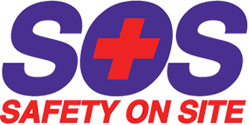Do I need to wear a Life Jacket???
Life jackets are aptly named. They are jackets that literally save lives. As reported by Lifesaving Society, “drowning statistics consistently show that 80% of victims in boating-related drownings were not wearing a lifejacket/PFD (personal flotation device). Wearing a lifejacket or PFD is the most effective way to reduce boating-related drownings in Canada.”
We cannot stress this enough. It is an absolute must that life jackets are worn when enjoying time either on or around the water. We’re talking about boats, docks and even around the pool. That goes double for kids and individuals who are not strong swimmers. In Oakville, Ontario, where many residents have their own private pools, life jackets should be considered a must!

Life jackets prevent drowning.
The first and most obvious reason to wear a life jacket is to prevent drowning. Life jackets are comprised of light materials, like foam. They displace a lot of water compared to their weight, providing buoyancy. The jackets are designed to keep their wearers above the surface of the water in upright positions. This, of course, enables people who would otherwise be submerged in water to float and breathe normally, even if they are unconscious or extremely fatigued.

“Most people who drown are within 15 metres of safety,” Lifesaving Society points out, “The simple act of wearing a lifejacket can save your life by buying you precious time until someone can rescue you.”
Life jackets ward off hypothermia.
In addition to drowning prevention, life jackets help to minimize significant drops in body temperature. Being immersed in cold water can lead to hypothermia. Thanks to the insulation provided by life jackets, wearers can retain some body heat. This can greatly lengthen the amount of time one can spend in the water without suffering rapid temperature loss. Because hypothermia can set in pretty quickly, wearing a life jacket is a critical combatant against this life-threatening condition.

A life jacket “reduces the initial impact when you first fall in the water (shock from the cold water on your muscles), which can help prevent hypothermia, which is not a pleasant experience,” alerts the Canadian Red Cross, “If you are alone and are wearing a Canadian-approved personal flotation device (PFD), slow down body heat loss through the Heat Escape Lessening Position (HELP) (cross your arms tightly against your chest and draw your knees up). This position can increase your survival time by 50%.”
It’s vital to ensure the proper fit of your life jacket.
No matter the PFD you use, it’s important that it’s the right size. A properly fitted life jacket won’t lift higher than the ears or mouth of the wearer. A person should be able to keep his or her head and chin out of the water when wearing the life jacket.

It’s so important for children to wear the right-sized life jackets. To test it, have your child stand normally with arms at his or her sides. Grab the jacket at the shoulders and firmly lift it up. The jacket is not a right fit if it moves more than 7.5 centimetres up and down the child’s body during the test.
Learn first aid in Oakville!
At SOS First Aid, we offer a Standard First Aid training and Emergency First Aid training to help you respond to emergencies at home, work or by the water. We provide Frist Aid training at no less than three different Oakville locations! Oakville First Aid training locations include Oak Park Neighbourhood Centre at 2200 Sawgrass Drive, The Meeting House at 2700 Bristol Circle and the SOS First Aid training centre at 700 Dorval Drive.
For more information, please don’t hesitate to call us at 905-844-9813. You may also email us at [email protected].






